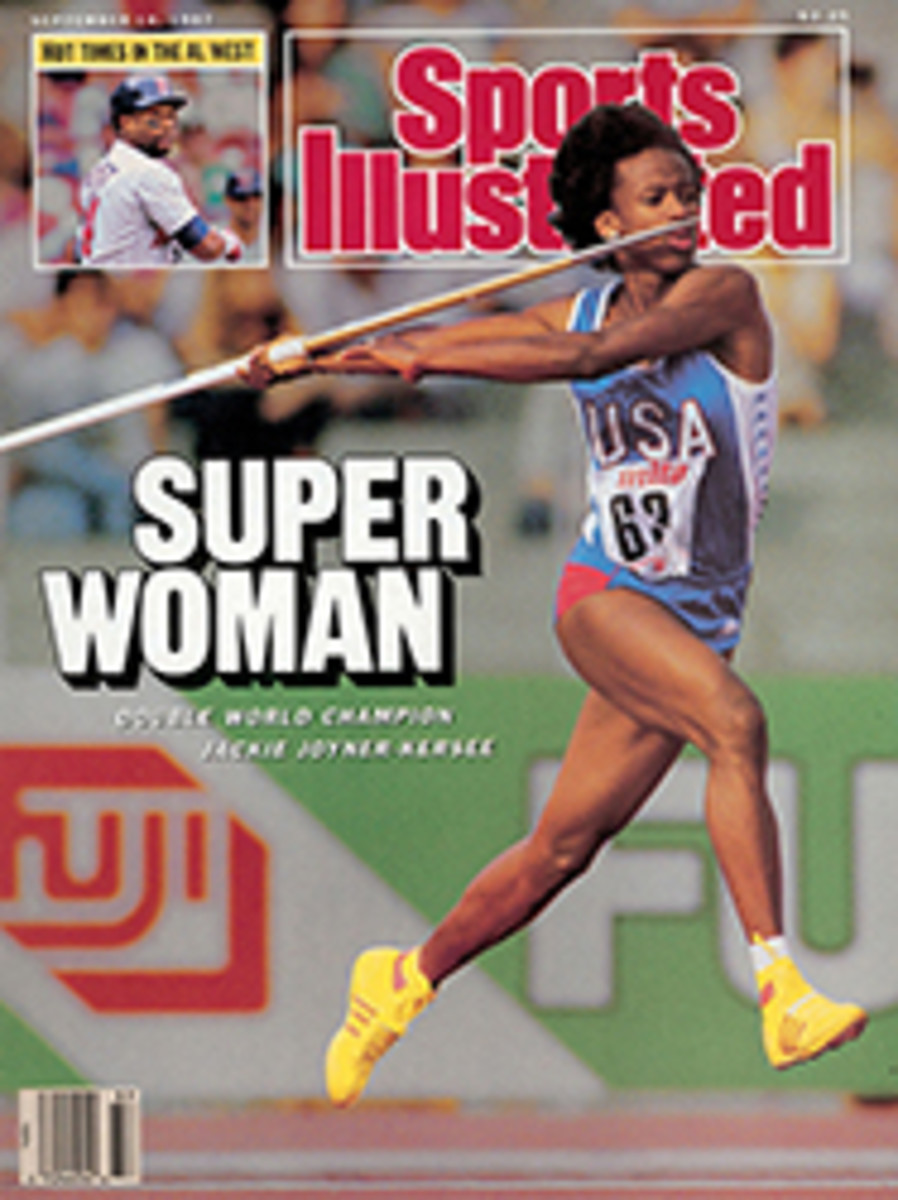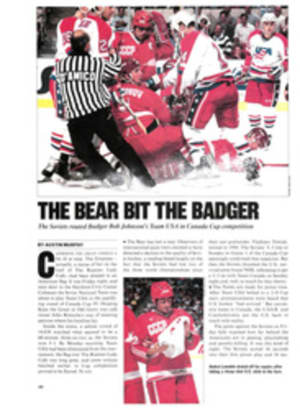
BATS, BALLS, BEAUX ARTS
Artists and writers celebrate our national pastime more than any other sport. From Eakins to Warhol, from Angell to Updike, painters and writers have feasted on baseball's stadiums, uniforms, crowds, geometry, movement and metaphors. Now fans can enjoy Diamonds Are Forever: Artists and Writers on Baseball, the most impressive collection of baseball art ever assembled. The exhibition, which opens at the New York State Museum in Albany (Sept. 16-Nov. 15), will travel to eight other cities in the U.S. over the next three years.
Peter Gordon, the exhibit's curator, thought of the idea several years ago while reading Donald Hall's Fathers Playing Catch with Sons: Essays on Sport (Mostly Baseball). When he discovered an excerpt from John Updike's famous New Yorker piece on Ted Williams's last game and final homer, "Hub Fans Bid Kid Adieu," Gordon was transported back to his youth.
"I experienced the same sensation I had when I heard Williams's homer on my transistor radio while at junior high soccer practice," says Gordon, 39. "I thought, Maybe other artists and writers can touch people in the same way.
"In assembling the exhibit, I considered myself a pitcher. You have to be strong up the middle, so Sydney Waller [the director of Gallery 53 in Cooperstown, N.Y.] was my second basewoman and Paul Weinman [the state museum's supervisor of museum education] was my shortstop. Sydney helped me with artwork and Paul with writing. My catcher was my boss. Bob Sullivan, the museum's director of exhibits and interpretation. Like a good battery, we kept bouncing ideas off each other."
"Are we baseball fans?" says Tiger fan Sullivan, 38. "When we're thinking about going to a national museum convention, our only question is whether the home team is in town."
"But we agreed that this exhibition should be about art, not baseball," says Red Sox fan Gordon. "We kept asking, "What is it about baseball that fascinates us, and why is it a source of inspiration for artists?' We decided that the artist's job is to put our feelings into art."
"And we found that the contemporary art was so good that we could move away from earlier baseball shows' reliance on nostalgia," says Sullivan. "Baseball offers so much dramatic change, from the importance of the individual to the team, from offense to defense, from stillness to action, from chaos to control."
"The key was getting the artists interested," says Gordon. "As they began to admit they liked baseball, one artist would suggest another to us. We were at the Barbara Toll gallery in New York City looking at a painting for the show when the sculptor Joel Shapiro came up and asked what we were doing. We told him and asked, 'Ever done anything on baseball?' 'No,' Shapiro said, 'but I recall Alex Katz showing something at a poetry reading at Cooper Union. Call him up; use my name.'
"We're talking big league here—the George Scott of the art world," Gordon continues. "We contacted Katz, and he was happy to help. As we were leaving his apartment with [his sculpture entitled] 'Baseball Figure,' his wife told us [the painter] Eric Fischl had been there to have his wedding portrait done, had overheard her talking about baseball and would do a piece, too.' The result was 'Boys at Bat.' "
Gordon amassed 116 selections and divided them into five parts: "The Place: The Perfect Greenness of It"; "The Equipment: This Spare and Sensual Object"; "The Players: One of the Best Sonsabitches Ever to Kick a Toe into Third Base"; "The Action: The Practiced Ballet"; and "Something Else: This Diamond Encloses What We Are." The objets d'art range from the celebrated to the surprising. Among the best-known artworks are Michael Langenstein's "Play Ball," derived from Michelangelo's "Creation of Man," in which the hand of God passes the baseball to Adam; Harvey Dinnerstein's painting of Joe DiMaggio at bat; and Andy Warhol's neo-bubble-gum-card painting of Pete Rose. Baseball readers will recognize passages from Roger Angell's The Summer Game and Five Seasons, Philip Roth's Portnoy's Complaint, Bernard Malamud's The Natural and William Kennedy's Ironweed.
Gordon carefully paired complementary pieces from different mediums. Diamonds Are Forever opens with a quote from author Lesley Hazleton about "the perfect greenness" of the first baseball field she ever saw, coupled with painter Ralph Fasanella's tableau of Yankee Stadium. In the closing section, Walter Iooss Jr.'s photographs of elderly softball players and Little Leaguers are wedded to Garrison Keillor's essay, "Attitude." And in between there's a real gem: Jim Dows photos of the minor league parks in Charlotte and Durham. N.C., melding with "Spring Training in the Mountains," a Vincent Scilla oil of an outfielder performing before an American Beauty Creamery Butter sign.
"If you've ever been to a minor league ballpark, that's what you see: advertising on the fences, and trees and hills beyond," says Scilla, 38. "I like advertising on fences. When I was a kid, I made parks out of erector sets, tore labels off cartons and put them on the walls. In the minors you could always tell where you'd been by the products they were selling."
A 168-page Diamonds Are Forever catalog is available (Chronicle Books, $35 hardcover, $18.95 paperback). The exhibit includes a smattering of other art forms: a baseball-card exhibit, an audio of baseball music, a clip of Abbott and Costello's "Who's on First?" and several film segments. Organized with assistance from the Smithsonian Institution Traveling Exhibition Service and underwritten by American Express, the exhibit will tour to the Norton Gallery of Arts in West Palm Beach, Fla. (winter 1988); the Museum of Art and History in San Juan (spring 1988); the Cincinnati Contemporary Arts Center (summer 1988); the Utah Museum of Fine Arts in Salt Lake City (fall 1988); the Baltimore Museum of Art (spring 1989); the Chicago Public Library and Cultural Center (summer 1989): the Oakland (Calif.) Museum (fall-winter 1989) and the New York Public Library (spring 1990).
ILLUSTRATION
COLLECTION OF PHIL DESIND
In Dinnerstein's oil painting "The Wide Swing," Joltin' Joe takes a big cut at the ball.
ILLUSTRATION
COLLECTION OF MR. & MRS. SAMUEL A. RAMIREZ
Look familiar? Langenstein's "Play Ball" collage borrows from Michelangelo.
Jim Kaplan is the author of a new baseball book, "Playing the Field."

